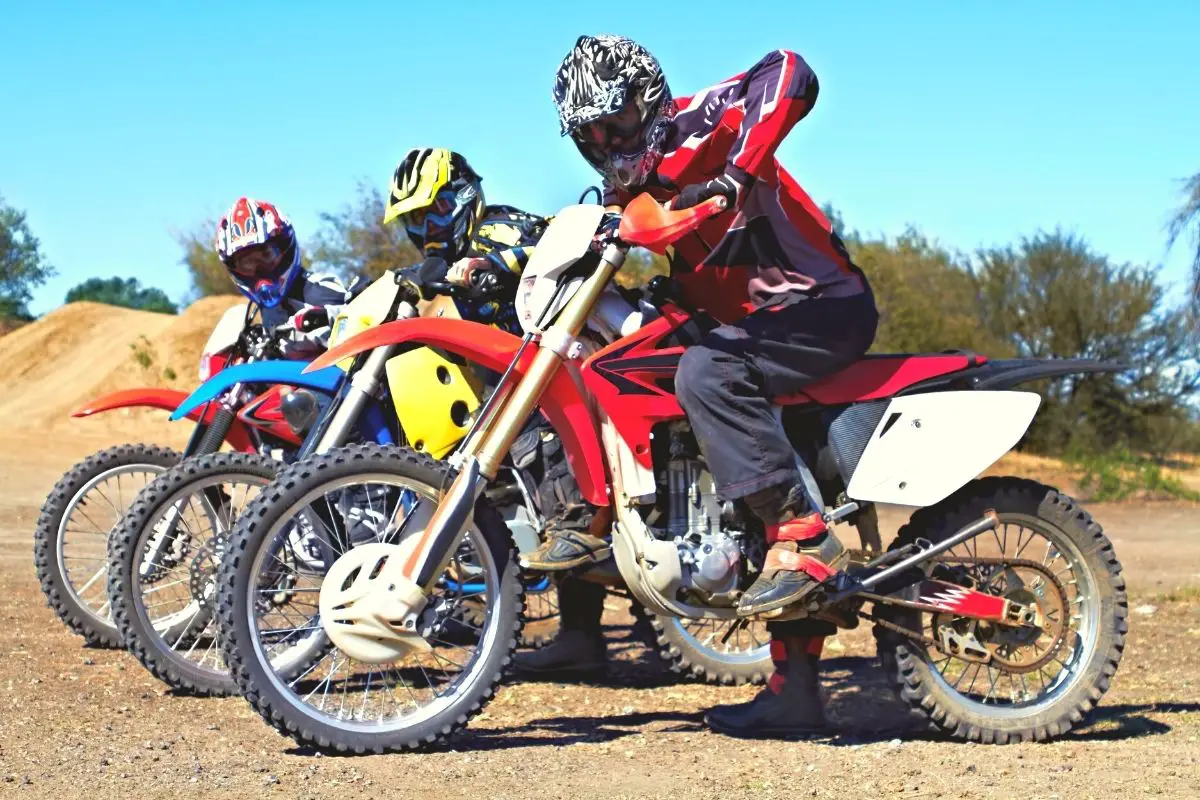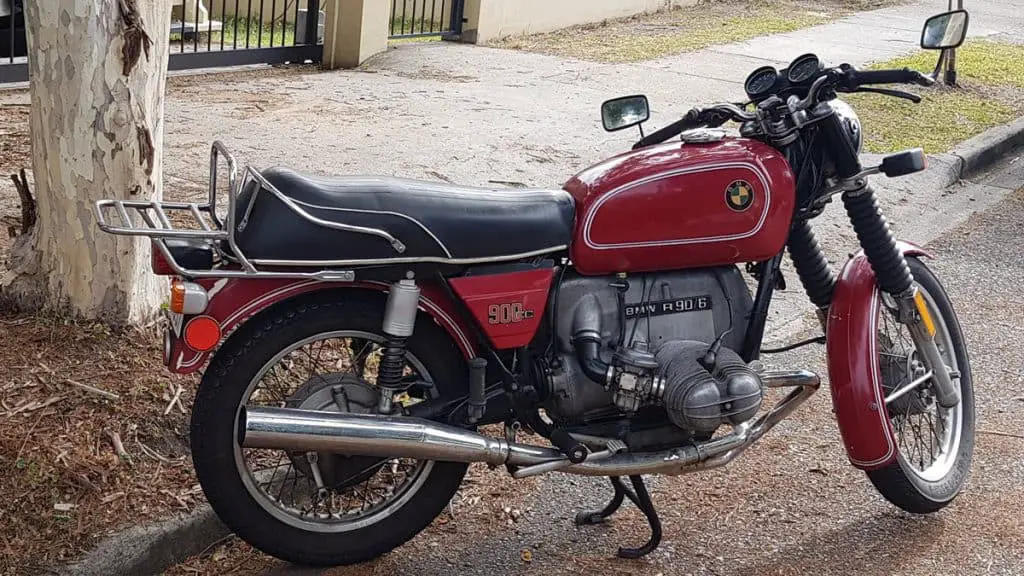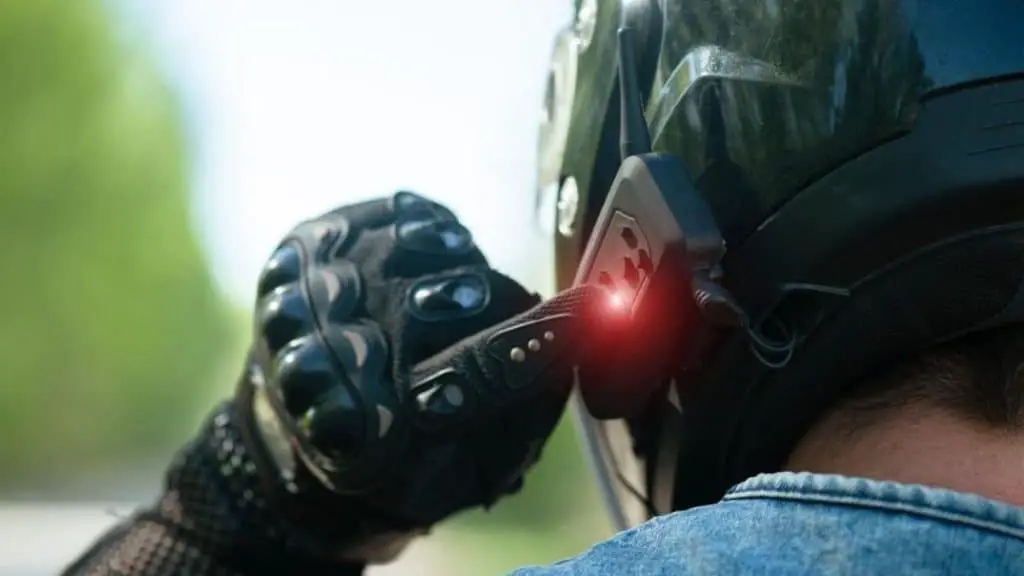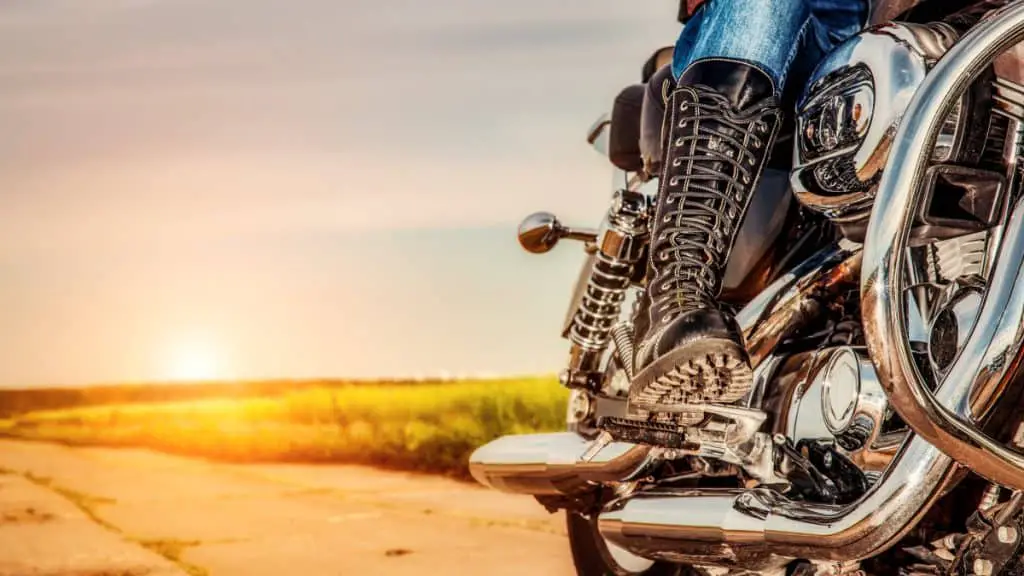Indian vs Harley vs Victory: The Battle of the Triads
Let me guess…
You are one of those numerous riders who find the roar of a Harley engine more thrilling than anything else in life.
Without a doubt, Harley-Davidson is THE undisputed king of machismo that has dominated the North American motorcycle market for decades.
But the news is, Harley is being challenged by a resurrected competitor. After a bumpy ride for a few decades, Indian Motorcycle has made a strong comeback in the market.
In fact, the rivalry between Harley-Davidson and Indian goes back by more than a century. You can easily compare it with that between Ford and Chevy, or Nike vs Reebok.
But we aren’t talking about just these two brands. The equation can easily turn even more complicated if you drop in yet another, similar-but-not-so-similar brand: Victory vs Harley vs Indian.
But is it even fair?
Ironically, Victory was defeated by the hard rules of the consumer market and their motorcycles are no longer in production.
Time to tell you the whole story.

Harley vs Victory vs Indian: A Look at the Past
To get a clear picture of these brands, we need to start with their history.
In 1901, William S. Harley and his friend Arthur Davidson started working on a plan to develop motor bicycles under a shed. They were joined by Walter Davidson, Arthur’s brother.
After their prototype machine was functional in 1904, the team set up their first factory in Milwaukee. The first V-Twin models of the Harley Davidson were developed around 1907 and production went up. In World War I the Harley’s were in high demand from the US army.
In the following decades, Harley Davidson produced many milestone designs as innovations went up. As expected, the brand underwent some major changes in terms of branding and reshaping its identity. (And hundreds of smaller changes too. Just think of super vs wide glide design!)
Even so, over the years Harley Davidson has emerged as a cultural phenomenon with super-strong customer loyalty. In fact, the brand’s longevity is one of the major causes behind its popularity.
Looking back, you’ll find that the “Indian Motorcycle Co.” was formed in 1897, a few years before Harley Davidson. The brand was launched by George M. Hendee, who was later joined by Oscar Hedstrom.
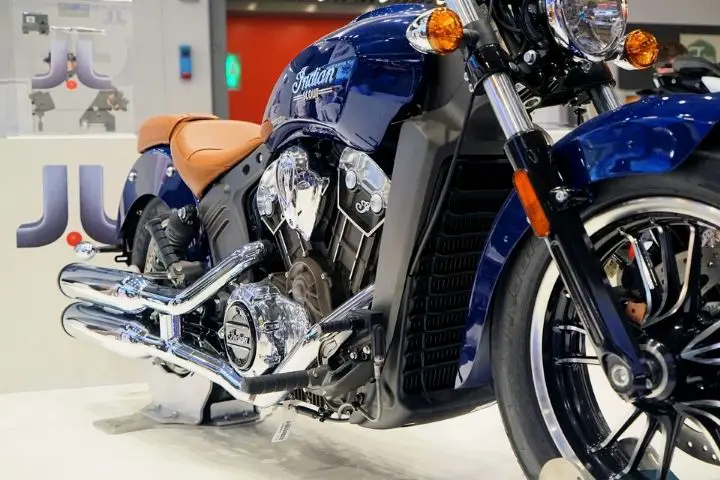
The first prototype was developed in 1901, and the sales began in 1902. Many of the earlier models were highly successful in endurance rides and competitions. This was a big reason behind the high popularity of the brand.
The US army used the Powerplus line of Indian extensively during World War I. However, by the end of the war, the brand had lost its number one spot to Harley Davidson.
In the next two decades both the brands kept going neck to neck. But after the Second World War, the market began to slide for Indian.
(Makes one wonder how, what with the company’s WW2 engagement for the military.)
Multiple ownership changes during this period led to a period of uncertainty for the brand. In 1953 Indian stopped production of all its motorcycles. In the subsequent decades, there were multiple attempts of reviving the once iconic brand, without much success.
The scenario changed when Polaris Industries acquired Indian in 2011. Production was restarted in a facility located in Spirit Lake, Iowa. Since then the brand has resurrected itself by reengineering its products and showcasing respect for the heritage of the Indian brand.
Today they are ready to give Harley a run for their money.
One Bike’s Heaven is Another’s Hell?
Interestingly, the revival of Indian Motorcycles is closely associated with the downfall of Victory Motorcycles.
(You know, sometimes, history needs a push to move faster.)
Let me explain quickly…
Victory Motorcycles started its production in 1998, from its facility in Dickinson County, northwestern Iowa. Its parent company was- none other than Polaris Industries. Truth is, the brand showed great promise after being launched.
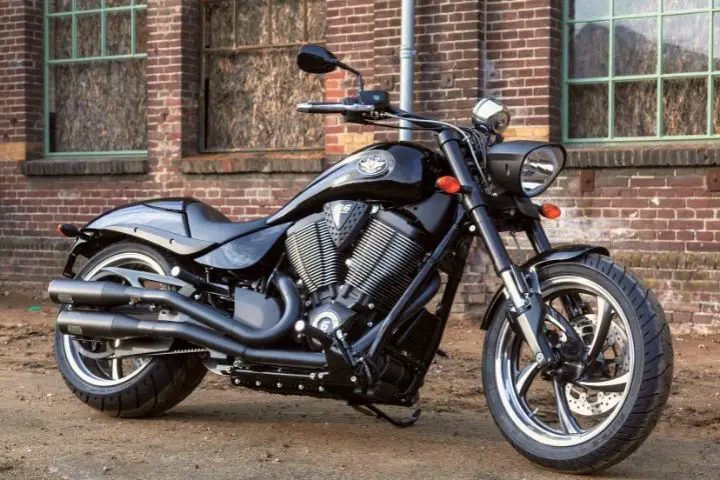
The motorcycles of Victory were in direct competition with Harley Davidson. Within a relatively short period, the brand even managed to develop a loyal following. Their big and bold designs offered solid performance and reliability. Reportedly, some of the technology they used was more advanced than Harley.
In fact, in 2015 they were rated by Consumer Reports as the motorcycle brand with the best owner satisfaction. However, their profit margins started declining in the later years.
Things took a turn after Polaris purchased Indian Motorcycle in 2011. In 2017, Polaris hit the reset button and announced that it will start shuttering down all operations of the brand. The main reason was low profitability.
No such thing as timeless! No matter how good a product is, kids won’t love it just because their dads did.
On the other hand, Polaris announced that they will use their experience to revive the Indian Motorcycle brand. The decision was taken to improve the profitability of Polaris and advance its competitive stance against Harley Davidson.
It was a sad day for the admirers of Victory. However, its downfall paved the way for Indian to rise again in the market.
Victory vs Harley vs Indian Motorcycles – Choosing the Best Brand
Note, you can buy only used Victory motorcycles at present. So placing them on the same platform with Harley-Davidson and Indian motorcycles isn’t the right comparison.
However, Polaris has declared that it will continue to provide spare parts and warranty support to Victory owners for a period of 10 years after its closure; that is, till 2027. Today, used Victory models are popular as starter bikes as they are available at a cheap price.
Besides, they are also considered collector items. That means you can get excellent resale value a few years down the line.
I haven’t ridden a Victory motorcycle, but I have heard quite a few riders gushing about their performance. Some of the models like the Victory Cross Roads came with an awesome combination of cool looks, top-notch handling, and comfort.
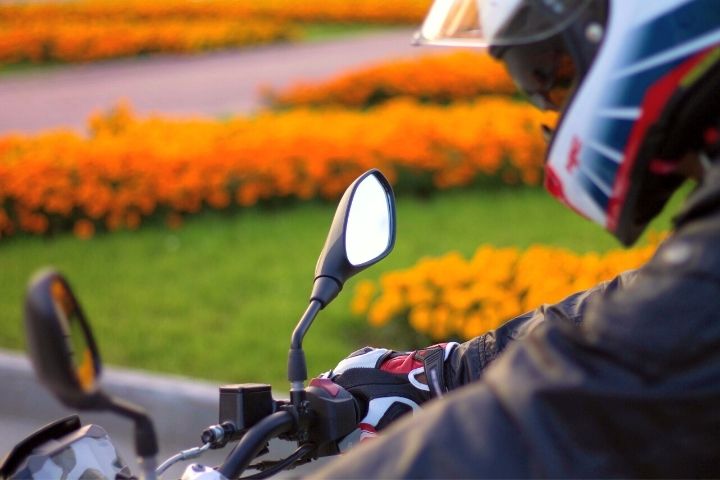
So, here’s a list of the main points that made them popular:
- The design team at Polaris had done a great job with the design of these motorcycles. In terms of looks, they were as good as Harleys but preserved their own originality with those stylized lines.
- Polaris also brought together some of the leading designers to perform a thorough research process years before they started production. That ensured the high quality and performance of Victory motorcycles.
- Most owners mentioned that the tight steering and a low center of gravity made Victory motorcycles extremely well-balanced.
- Victory used advanced engine design and offered great reliability with their products. The use of a robust steel frame also increased the durability of the machines.
- Models like the Victory Cross Country Tour excelled in ride comfort and offered high cargo capacities.
- In terms of overall reliability and customer reviews, Victory was as good as Harley. Their motorcycles also had a high rider satisfaction score.
TIme to say RIP to Victory and move on to the realm of the living.
Indian vs Harley Showdown
No guide you can stomach in less than 10 days can outline ALL the models where one brand beats the other and vice versa. But let’s look at the main factors that could make a difference to a beginner to intermediate rider.
The Heritage Factor
There are many debates about whether Indian can call itself a heritage brand over a century old. Many traditionalists consider the long gap in production after 1953 as a blemish on the brand’s reputation.
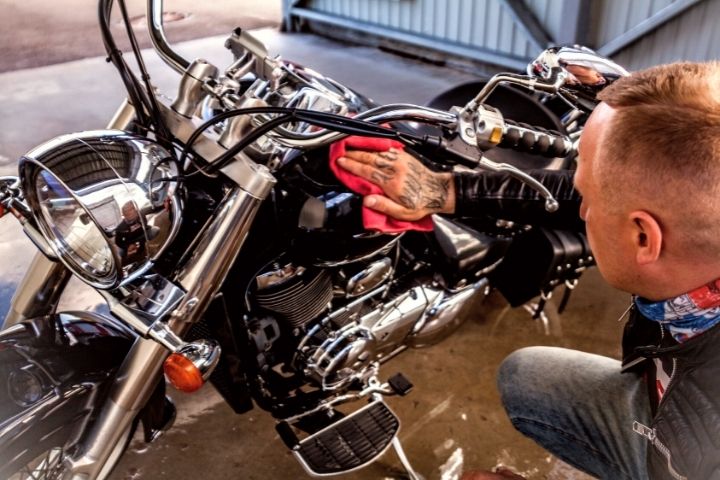
Because it wasn’t smooth sailing for Harley Davidson all through the last century either. The brand almost went bankrupt and took a few hits to its reputation. However, it never stopped production and has a superior legacy that has been passed on through the generations.
If you want to be a part of the Harley legacy, then you can’t help but choose the brand over Indian. But if you don’t really care about the heritage factor, Indian is a brand you can’t ignore.
Styling & Attitude
When Indian started its new journey, they designed motorcycles that were closer to the 1953 Indians in terms of design. The goal was to establish a connection to the past heritage. Once the purpose was served, the brand moved on to new designs from the retro-themed ones.
Presently, Harley has five major types of motorcycles. Each category has a different purpose and design specifications. This includes the cruiser, street, touring, and trike motorcycles. In 2020, Harley also stepped into the world of electric motorcycles by launching LiveWire.
It goes without saying that both brands come with an unapologetically muscular styling. But there are subtle differences that make the two brands distinct from each other.
For example, the FTR 1200 sportbike from Indian is a genuinely fun-to-ride sportbike that offers a unique personality. Not something you’ll find in the Harley stable.
Its closest competitor, the Harley Davidson Sportster S comes with a more sophisticated design. Even so, it’s less sporty.
Still, styling is an individual choice that you can’t evaluate technically.
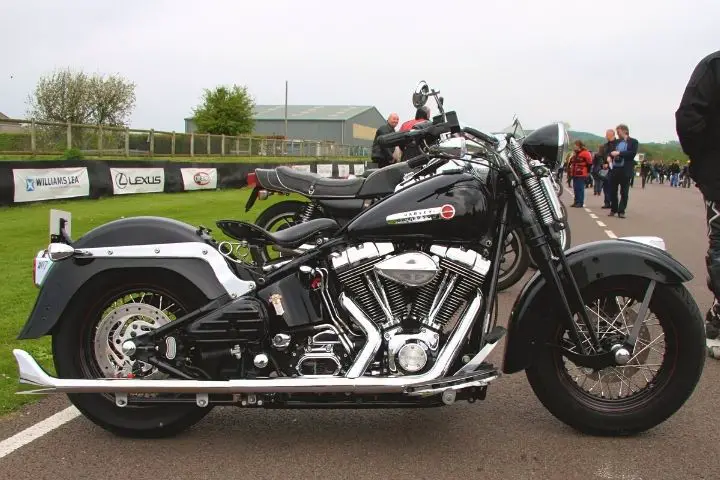
Performance
With a wide variety of models in both camps having different features, a general performance comparison isn’t possible. However, since baggers are the biggest sellers in the USA, let’s compare Harley-Davidson’s Road Glide Special with Indian’s Challenger Limited.
Both the motorcycles are similar in multiple ways, including their price, features, and weight. Overall, they are great machines when you need to cover some serious miles. In fact, at the press launch of Challenger Limited, Indian provided a detailed comparison with the Road Glide Special.
In reality, the liquid-cooled, 60-degree V-twin engine of the Challenger offers more power and torque. Also, the overall design provides a more comfortable riding experience.
Obviously, Indian wants to improve its market share by offering a better bang for the buck in terms of performance.
Keep in mind that this isn’t true for all models that are worth comparing. At the end of the day, a bit of healthy competition is great for the buyers.
Price Comparison
You don’t hear the words “affordable” and “Harley” in the same sentence every day, do you? But when it comes to entry-level models, Harley offers more options and is more affordable.
The models like the Street 750, Iron 883, and Iron 1200 cost under 10k and are good options for beginners.
In comparison, Indian has a single option in the cruiser category. The Indian Scout Sixty, which is designed for younger riders, comes at a similar price tag. However, it offers a more powerful engine than the Sportster Iron 883 and is also more fun to ride.
The competition is tough between the brands in the cruiser and bagger segment. So the prices are extremely competitive. Indian is still expanding into other segments, whereas Harley has a more dynamic presence.

Aftermarket Support
Buying a bike is never just about looks or performance. It’s also about trying to anticipate what options you’ll have when something breaks.
Not surprisingly, that’s one of the areas where Harley has a clear-cut advantage over ANY other brand.
Two reasons for that. First, the sheer number of decades that Harley’s been in business. Second, the cult-like worship that sometimes borders on contempt for non-HD owners.
Little wonder that these dealerships have grown to become great hangout zones for members of the Harley clan to interact with each other!
Besides, when it comes to customizing your motorcycle and adding aftermarket accessories, the knowledge base of the Harley Owners Group is simply unbeatable. In addition, you have more availability for new and used parts.
Now that’s something Indian will take years to catch up with.
Indian doesn’t have as many dealers as Harley, but its network is growing. However, with plenty of independent bike service shops around, handling maintenance issues shouldn’t be a problem.
The Road to the Future
In the current market, Harley Davidson motorcycles are the undisputed frontrunners. As per the records of 2020, the market share of Harley Davidson in the US was 31.1 percent. Indian is a part of the other brands that have a 15.5 percent share of the market.
However, even though motorcycle sales went down in the US in 2020, Indian has improved its total sales as a brand.
That said, the motorcycle landscape is changing and the cruiser may not be the top-selling variety in the coming years. For this reason, both brands are putting more focus on the segments like adventure, sport naked, and EV.
Compared to Harley, and other brands like BMW, Indian has a more tough task on its hands. It needs to expand its range at a fast rate, without impacting profitability.
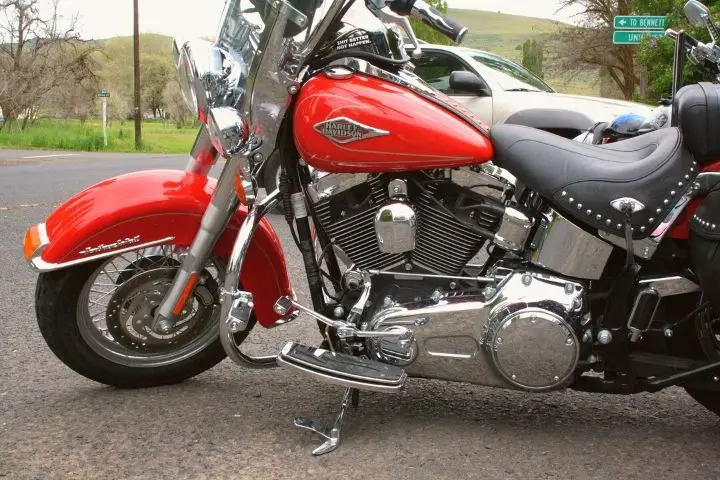
Bottom Line…
We have already excluded Victory from a direct comparison with the other two brands. There are hardly any chances of its revival either.
So do we have a winner when it comes to Harley Davidson vs Indian?
Not really.
In terms of popularity and sales volume, Harley is the clear winner. But Indian has a distinct identity that helps you to stand out.
Technically, both brands offer great motorcycles and have different advantages. Indian may be better in terms of raw power and technical features, but the difference isn’t much. These include features like more advanced powertrains, better braking systems, and more.
Obviously, if all you want is performance. Indian might be a better option. But when it comes to the overall riding experience, you really can’t put one brand ahead of the other,
However, there’s a lot more to it than specs and performance.
One question many riders have is whether these motorcycles are American-made.
Both brands use components that are manufactured overseas. However, the final assembly, inspection, and each stage of quality control are done in the production units in the United States.
Most importantly, the riding experience of a motorcycle is subjective. So, simply comparing the technical features doesn’t give the complete picture. A lot depends on the rider’s personality and physical features.

So what to do if you have to choose one or the other?
My suggestion is to take both bikes out for a ride to find out which is the best for your riding style.
Frequently Asked Questions
Which is better, Indian or Harley-Davidson?
In terms of technical features, some Indian motorcycles are ahead of Harley Davidson. When it comes to overall performance and reliability Harley is still the market leader. That said, the best motorcycle is the one that suits your riding style.
Are Victory and Indian motorcycles the same?
No, Victory and Indian motorcycles are not the same. Polaris Industries launched the Victory brand in 1998. The production of Victory motorcycles was stopped in 2017. Indian Motorcycle comes with a century-old heritage and was purchased by Polaris Industries in 2011.
Who sells the most motorcycles in the US?
Harley Davidson sells the most motorcycles in the US, followed by Honda, then Yamaha and Kawasaki. Quite different from the global market where Honda leads, and the runner-up is Chinese Yadea!

